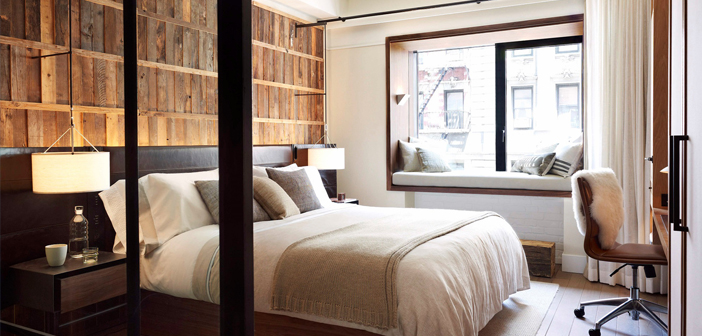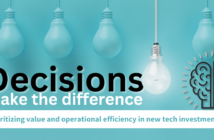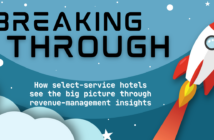by Bill Lally
Hotels may adopt technology for different reasons – some are attracted to benefits like energy management and operational efficiency, and others are looking to provide a better guest experience. But technology moves fast; there’s always something new coming out that will improve both of these areas for the hospitality industry. Technology trends are slow to hit hotels because of the amount of coordination that goes into implementation of these sophisticated large-scale systems. In the last few months, a few trends have emerged that are forward-thinking and being implemented right now.
Voice control
Recently, voice control has grown tremendously as a category in the consumer space as Amazon Echo and Google Home are rapidly joining every household. Consumers have been loving voice control because of the convenience and the futuristic feel, and it will only continue to grow. So far, the number of hotels adopting voice control technologies for guest rooms is very limited because getting the voice control experience right in a hotel environment is the biggest obstacle for adoption.
A main factor that makes implementation of voice control tricky for hotels is that guests won’t have as much time to acclimate to using it as they would in their own home. When they buy their Amazon Echo or Google Home, there’s a trial-and-error period as users get familiar with how to properly phrase commands and take the time to learn how to get the device to work.
In hotels, if guests can’t figure out how to control their lights, thermostat or scenes with their voice within the first 15 to 30 seconds, they’ll deem it useless and/or call down to the front desk for help. This removes the hotel’s intent and investment of providing added value to its guests.
It’s much easier to give guests a remote or a keypad to control their room, but presenting a list of voice commands to use the voice control system isn’t practical. The voice control technology and programming in a hotel room has to be much smarter than an average home. So while we’ll see voice control slowly seeping into hotels, finding a way to get it to work perfectly will be the challenge. It will take time as developers continue to make customizations for the hospitality industry.
Circadian lighting
Of all of the details that designers and hoteliers consider in a guestroom, light bulbs may not be at the top of the list for technological advancement. But a new trend in how lighting is designed and programmed has been growing beyond on/off and simple dimming. Hotels have been creating ways to help their guests maintain their circadian rhythm – the human body’s neural and hormonal coordination to the time of day and lighting. The most common example of the effects of disrupted circadian lighting is jet lag.
With circadian lighting, lighting color temperature – particularly white light shifting from warm, more orange tone in the morning, to a cooler “blue” light midday and back to warm again in the evening – emulates the sun’s light pattern throughout the day and keeps the body’s internal clock most efficient from both a working and resting point of view. For business travelers specifically, this can help them overcome jet lag symptoms in a shorter period of time.
Taking lighting and shades to the next level can provide additional benefit for guests to help hotels differentiate themselves from competitors. The industry will continue to see this trend grow in adoption over the next few years. It’s a simple amenity that provides a direct, beneficial experience to guests.
Automation
Hotels have been steadily adopting automation systems for their lighting or energy-management programs, and now these systems are becoming more sophisticated to better improve the guest experience and operational efficiency. Automating the lighting and HVAC system is the first step, and now these systems can incorporate new features including entertainment, control methods (like voice control) and more connected devices in the room.
On the management side, more and more sensors are being integrated, allowing hoteliers to see data about room statuses. This is beneficial for a few reasons. Housekeeping can automatically see when room service trays need to be collected, or when a room previously marked do-not-disturb can be cleaned, allowing for more efficient operations and limiting unnecessary guest-staff contact. Management is also able to keep rooms in cue for faster turnover and profitability. There’s also a maintenance benefit, where consumables such as HVAC filters are replaced only when needed if indicated by a sensor, instead of on a set schedule.
Smart energy-management
Energy efficiency programs in hotels have been a rising trend for many years, and new advancements are allowing to take them to the next level where the building itself becomes smart. A technology sustainability program is easy to sneak into other upgrades that hotels are making. As hotels add automation systems, an energy-management back-end system that controls all of the devices will make it easier for guests and staff to limit energy consumption on a larger scale. With automated lighting, HVAC and occupancy sensors, hotels can reduce the amount of time that lights and the air conditioning are on when they don’t need to be. Integrating them further with housekeeping, time of day, and check-in or check-out times provides additional efficiency.
The rooms can be automatically set to deactivate all lights and turn down the thermostat once a guest has checked out, and doing this for several hundred devices coordinated across the hotel can go make much greater strides in reducing energy consumption and overhead costs. With a back-end system that’s tied in to the control of everything, hoteliers have insight into energy consumption to monitor and improve operational efficiency. Reducing paper consumption, switching to lower-energy light bulbs and reducing water waste are good efforts, but more hotels will be able to improve their energy-management programs with better technology integration for a smarter building.
Connectivity and entertainment
Entertainment is about to see a big change in hospitality. Guests are now used to being able to stream or share their music and video content in their home, and they’re starting to expect it of hotels as well. So when it comes to technology, hotel rooms have to act like a house, where guests can connect into the TV or speakers to play their content. This also goes along with the connectivity options for guests; the strength, reliability and ability to connect to the Wi-Fi is of primary importance, and new ways to optimize these networks will continue to develop.
Propelling into the future
Control methods, entertainment and advancements in automation are the main categories that we’re expecting to see growth through the end of the year as hotels make upgrades. The adoption of hospitality technology is growing in line with guest expectations, preparing for preferred travel methods of new generations, and simply to stay relevant against the competition.
Energy efficiency, lighting and voice control are concepts that we’re familiar with, but it’s the way that they’re developing – and the way hotels are using them – that are propelling us into the future. ■
Bill Lally is president of Mode:Green, an integrated building technology firm that has served some of the best hotels in the world. Specializing in designing, installing, integrating and managing complete turn-key systems for audiovisual, energy management, lighting, HVAC and building control systems, it serves as the technology liaison to fill the gaps where typical contractors and consultants leave off. To learn more, visit http://modegreen.com.




